
IEA: ‘Green’ coronavirus recovery would keep global emissions below 2019 peak
Josh Gabbatiss
06.18.20Josh Gabbatiss
18.06.2020 | 5:00amThe world has a “once-in-a-lifetime opportunity” to pour investment into clean energy and create millions of new jobs, according to the International Energy Agency (IEA).
Its “sustainable recovery plan” for the coronavirus pandemic lays out a series of measures that the agency says would ensure 2019 was the “definitive peak” for global emissions.
Launched in cooperation with the International Monetary Fund (IMF), the new report presents a strategy for economic growth that includes mass home renovations, fossil-fuel subsidy reforms, renewables and the expansion of power grids.
The plan puts the emphasis firmly on expanding existing technologies and approaches. It cautions against complex, novel infrastructure projects, but says emerging technologies such as batteries and clean hydrogen are “ready to scale up”.
Energy-sector greenhouse gas emissions would be 4.3bn tonnes of CO2 equivalent (GtCO2e) lower in 2023 compared to a scenario with no stimulus if the strategy is implemented, according to the IEA. This is more than the annual output from the entire EU.
Unlike the global financial crisis, which saw emissions “bounce back” to previous levels, the IEA says the unprecedented drop expected this year provides “a base from which to put emissions into structural decline” and on the path to the Paris Agreement goals.
The IEA’s plan
The IEA’s plan arrives against a backdrop of significant spending by governments to save industries and livelihoods affected by the pandemic. The agency estimates these measures already total $9tn, although other estimates have placed this figure as high as $15tn.
While the focus so far has been emergency relief, attention is now turning to longer term plans and many leaders and leading economists have suggested a “green recovery” is the best way to revitalise economies.
Carbon Brief recently launched an interactive tracker to record the ‘green’ stimulus packages that have been proposed so far – and this will be updated as more are revealed.
In its strategy, the IEA explores how such green stimulus spending could create energy-related jobs, boost economic growth, improve sustainability and build resilience to future shocks, laying out specific measures to implement between 2021 and 2023.
Coronavirus has hit the energy sector hard, with overall investment expected to drop by a fifth and jobs in the fossil-fuel, bioenergy and vehicle-manufacturing sectors most at risk, as the chart below shows.
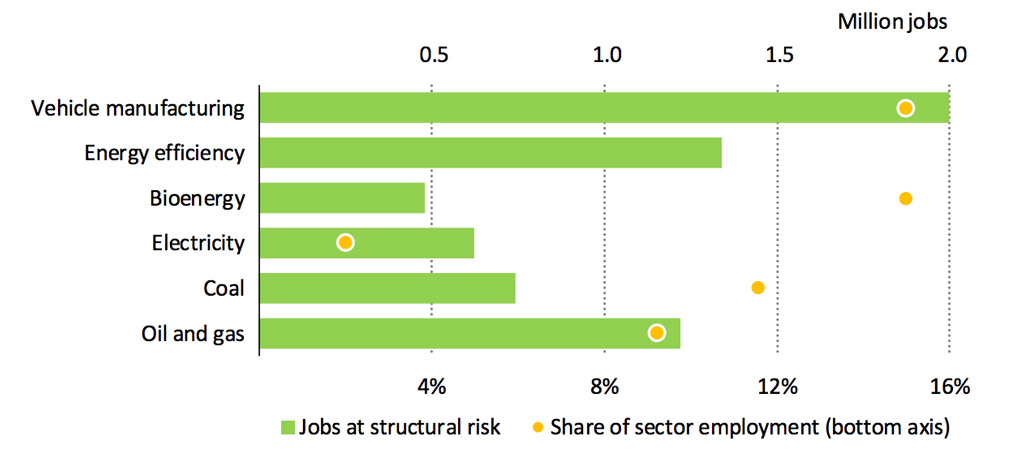
However, the IEA estimates that with global annual investment of around $1tn over the next three years, around nine million jobs could be saved or created in the sector – compared to six million at risk due to the pandemic.
This consists of $300bn of government spending each year alongside enabling policies, which the agency says would together mobilise private spending of around $700bn.
The report considers a “menu” of more than 30 different energy measures from six key sectors, namely electricity, transport, industry, buildings, fuel supply and technology innovation.
It attempts to balance factors including how “shovel-ready” projects are, how quickly workers displaced by coronavirus could take them on and how cost-effective their emissions reductions would be.
Retrofitting and constructing more efficient buildings scores highly in all of these categories, with the IEA singling the sector out as having the greatest potential for job creation. This can be seen in the chart below, along with other high-performing sectors such as recycling and solar photovoltaics (PV).
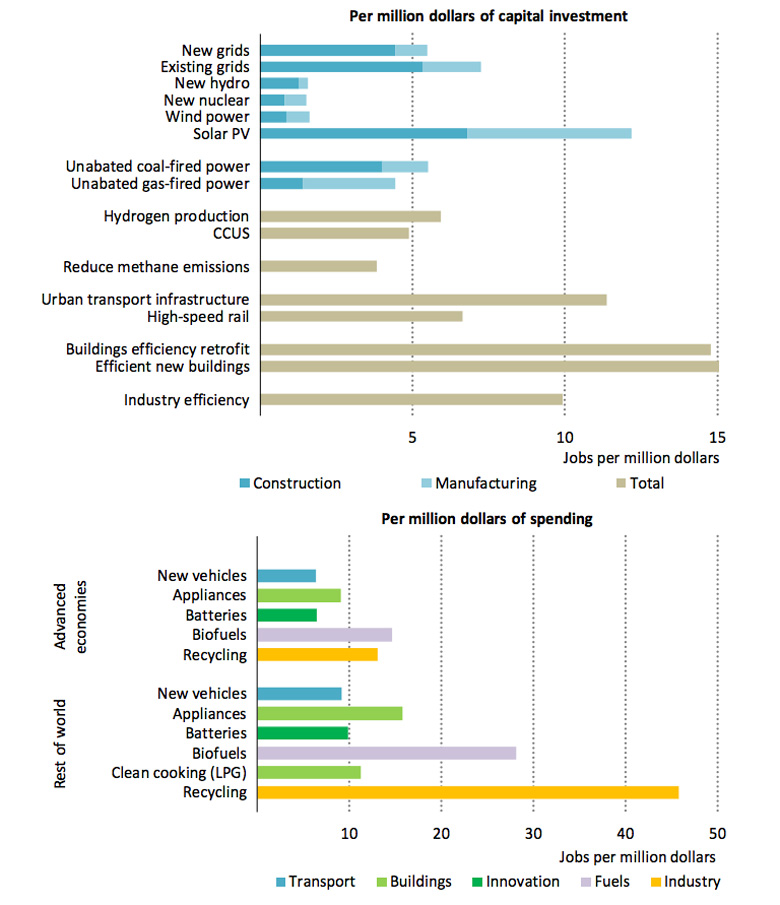
In fact, energy efficiency in general is highlighted as crucial to the success of the recovery plan, with one-third of the $1tn annual spending devoted to measures that make buildings, transport and industry more efficient. The report notes:
“Historical patterns show that efficiency measures have not attracted as much attention as they deserve; the unique set of circumstances created by Covid-19 mean that this could be an opportunity for their potential to be seized.”
An analysis conducted by the IEA with the IMF suggests the agency’s plan would, ultimately, lead to global GDP being 3.5% higher in 2023 than it would have been without any stimulus, as the chart below shows.
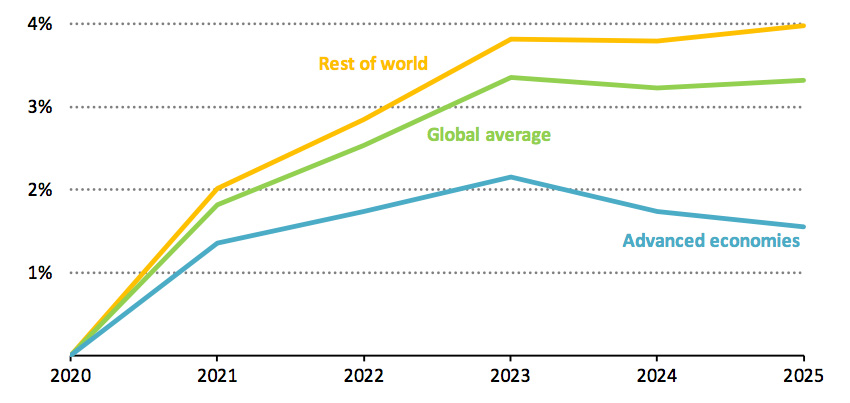
The plan also stresses the importance of governments attaching “green strings” to any support packages provided to high-emitting sectors, such as aviation or construction.
While IEA executive director Dr Fatih Birol says the report is “not intended to tell governments what they must do” it does provide a “detailed plan” that the agency wants “the world’s top decision-makers” from governments, industry and investment to discuss at its online Clean Energy Transitions Summit next month.
In a statement accompanying the report, Birol says:
“Policy makers are having to make hugely consequential decisions in a very short space of time as they draw up stimulus packages. Our sustainable recovery plan provides them with rigorous analysis and clear advice on how to tackle today’s major economic, energy and climate challenges at the same time.”
Emissions impact
While the core focus of the new IEA report is economic recovery and job creation, it also addresses the potential for post-coronavirus measures to play a key role in global emissions targets.
The IEA expects global emissions to fall around 8% this year, but notes that the recovery from the 2008-09 financial crisis was accompanied by the largest increase in emissions ever recorded.
Given this, the report considers “lessons” from the previous crisis. It also says that the world is in a better position today to recover in a sustainable way. Renewable technologies are far cheaper than they were a decade ago, for example.
The agency reports that due to the focus on energy efficiency, roughly a third of the CO2 emissions cuts resulting from its plan “would save emissions while also saving money”. This is demonstrated in the chart below, which shows significant financial benefits from improvements to industry, buildings and transport.
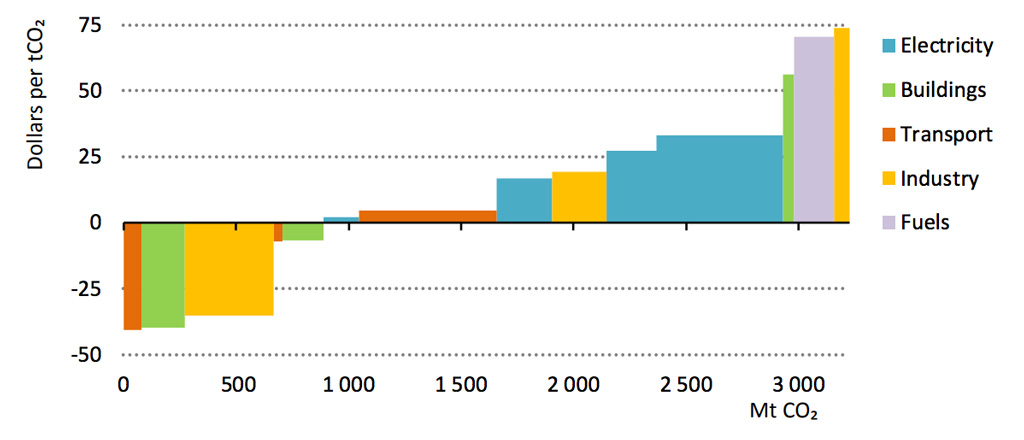
While the IEA says its plan would put the world “on a path” towards international climate targets, further down in the report it makes it clear that more would be needed to keep global warming within the Paris Agreement’s “well-below 2C” or 1.5C limits:
“The sustainable recovery plan would kick-start the reductions needed to achieve the goals of the Paris Agreement. Nonetheless, in isolation, the recovery plan would not be sufficient; further actions would be needed to put the world on course to achieve the Paris Agreement goals.”
However, if implemented, the agency says its plan would make 2019 the “definitive peak” for emissions, something that seemed highly unlikely only a few months ago, before the pandemic took hold.
The chart below shows the potential trajectories of energy-sector greenhouse gas emissions with and without the agency’s plan in place, with the alternative scenario one in which the world recovers in a similar fashion to the aftermath of the 2008-09 financial crisis.
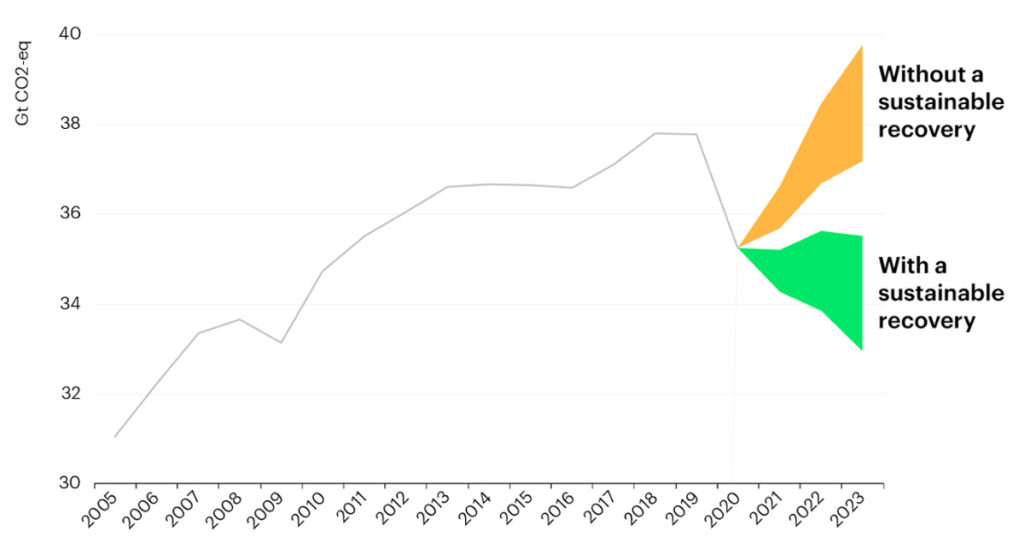
The IEA also highlights various other positive outcomes from its recovery plan, which would include a 5% drop in air pollution, an additional 270 million people accessing electricity and around 420 million people in low-income countries gaining access to clean cooking.
Buildings
The pandemic may cause a fall of up to 30% in construction activity this year, devastating a sector that employs nearly a tenth of the global workforce. But, under the IEA’s proposals, this is also the sector that would stand to see some of the biggest gains.
In order to compare the potential for job creation across different sectors, the IEA estimates the number of jobs that would be produced for every million dollars of spending.
The building sector – particularly, efficiency improvements – came out on top of this analysis. Retrofitting existing stock and building more efficient new buildings could create between nine and 30 jobs for every million dollars invested, it says.
The chart below shows both the potential employment outcomes of such schemes and some of the additional benefits, specifically the reduction in household heating bills around the world resulting from widespread home renovations.
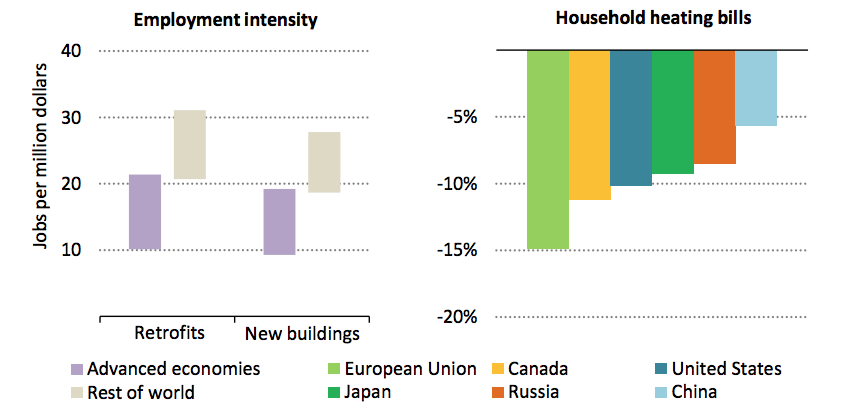
In total, the agency’s plan would see $250bn spent on the building sector each year, including improvements to the efficiency of home appliances and the expansion of modern cooking access to parts of Asia and sub-Saharan Africa.
To trigger the switch to cleaner building stock, the IEA suggests the mass rollout of subsidies, increased spending on appliances in the public sector and support for tighter efficiency standards.
Electricity
Unlike most of the power sector, renewable generation has shown “a degree of immunity to the Covid-19 crisis”, with wind and solar expected to grow in 2020, according to the IEA.
It concludes that building more of these facilities would “rapidly” create a large number of jobs, with solar PV coming at the top of the ranking for new job creation, following energy efficiency improvements.
However, the plan emphasises that this expansion would require policy support, with around $180bn each year for wind and solar PV projects. This is the highest cost for a single sector in the plan, as the chart below indicates.
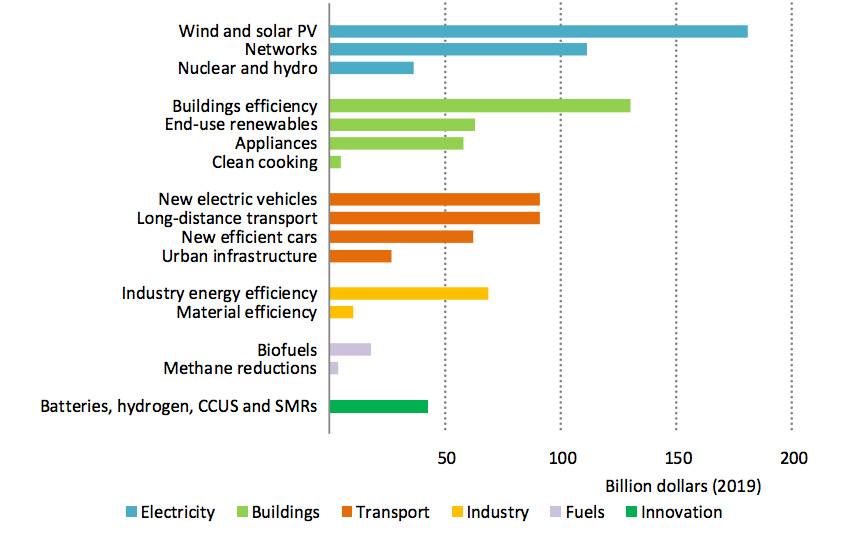
The report also emphasises the need to maintain and upgrade nuclear and hydropower – which collectively provide 70% of the world’s low-carbon energy – where the necessary licensing and approvals processes are in place.
Another key focus highlighted by the IEA is the expansion and modernisation of grids, particularly in low-income countries. It proposes various policy instruments for this including raised borrowing limits, tax credits and streamlined permitting processes.
Fuels
The report identifies the significant decline in fossil-fuel prices resulting from the pandemic as an opportunity to reform “inefficient” fossil-fuel subsidies “without increasing end-use prices”:
“In producer economies, fiscal positions are under a great deal of strain given increases in spending to deal with the health and economic crises, as well as the contraction in oil and gas revenues. Cutting expenditure on fossil-fuel subsidies could help alleviate some of this stress”
Oil-producing nations in the Middle East, such as Saudi Arabia and Iran, tend to offer the most generous fossil-fuel subsidies.
This is evident from the chart below, which shows the impact the IEA’s proposed phaseout would have on emissions savings in different regions.
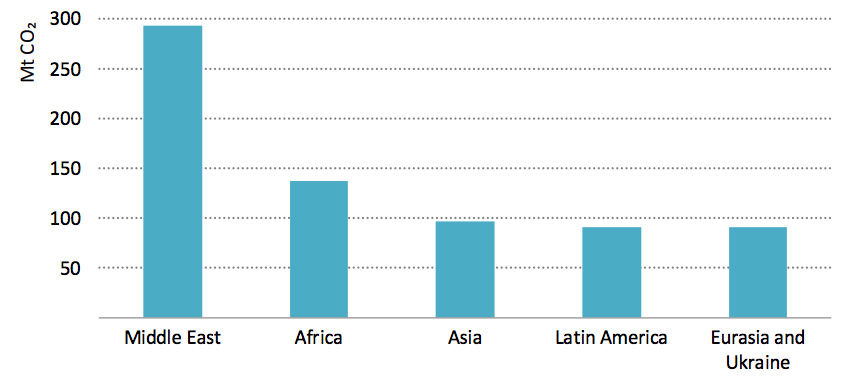
While noting that ending these subsidies would cut emissions by around 700MtCO2 by 2030, the agency says that, so far, “there are few signs” the fall in oil-and-gas prices is prompting this process.
Another area of improvement suggested in the report is methane emissions from oil and gas operation, three quarters of which the agency estimates it is “technically possible” to cut.
Under the IEA’s plan, any support for the sector would focus on cutting methane emissions. Skilled oil-and-gas workers could be retrained to patch up leaky infrastructure in a cost-effective strategy to bring down the sector’s emissions, it suggests.
Finally, the drop in transport fuel demand due to lockdowns around the world has also affected the biofuels industry. The IEA identifies this as an area that, with targeted support and policies, could “create a large number of new jobs in a short period of time”.
Transport
After lockdowns set in around the world, transport of all varieties saw sharp declines in usage and car sales fell by nearly a third in the first quarter, according to the agency.
- IEA: ‘Green’ coronavirus recovery would keep global emissions below 2019 peak
- Coronavirus: Tracking how the world’s ‘green recovery’ plans aim to cut emissions
- Webinar: What impact is Covid-19 having on global CO2 emissions?
- Q&A: Could climate change and biodiversity loss raise the risk of pandemics?
- Analysis: Coronavirus set to cause largest ever annual fall in CO2 emissions
- Coronavirus: What could lifestyle changes mean for tackling climate change?
- Analysis: Coronavirus temporarily reduced China’s CO2 emissions by a quarter
As some governments face criticism for providing “bailouts” to the aviation industry, the IEA notes that “a co-ordinated approach would also consider investment into alternative modes of transport”.
Its stimulus plans focus primarily on three areas of transportation: efficient new vehicles, urban infrastructure and high-speed rail.
With more than a third of the global car fleet more than a decade old, the agency proposes around $150bn of annual spending to incentivise the purchase of more efficient or electric vehicles (EVs) to replace these older models.
The investment would result in job creation not only in car manufacturing, but also in charging infrastructure and battery production, according to the IEA.
Noting that high-speed rail is “at least 12-times more energy efficient than air and road travel per passenger kilometre”, the plan proposes $90bn each year to boost this mode of transport – although some of this money would also be assigned to efficiency improvements for trucks, aeroplanes and ships.
The scheme also suggests a suite of improvements to make transport in cities cleaner, including more EV charging points, better public transport and improvements to walking and cycling infrastructure.
Industry
As with the construction sector, the IEA focuses on the potential for energy efficiency improvements to revitalise global industry after a coronavirus-induced slowdown.
Investment in energy efficiency measures for industry would create an average of around 10 jobs per million dollars spent, according to the agency.
Industrial electric motors, heat pumps and agricultural irrigation pumps are some of the specific devices that, if targeted, could quickly create jobs and generate savings, the report notes.
Under its proposals around $70bn would be spent each year in this area, with policy suggestions including tax deductions, rebates and cash-for-replacement schemes.
The plan also includes a proposal for the expansion of recycling schemes, another area that could provide a significant employment boost.
Technology
While many of the measures proposed aim to create new jobs as fast as possible, the IEA also notes that support for innovation and new clean technologies would have long-term benefits:
“The current low cost of capital adds force to the case for supporting research and development, providing market incentives, promoting commercial demonstration plants and encouraging the scaling up of manufacturing capacity.”
The plan sets aside $45bn each year for the acceleration of a selection of technology including hydrogen, batteries, carbon capture, utilisation and storage (CCUS) and small modular nuclear reactors.
The IEA notes that governments should play a major role in this investment, particularly in areas that are deemed “too risky” by the private sector.
-
IEA: ‘Green’ coronavirus recovery would keep global emissions below 2019 peak
-
‘Green recovery’: IEA plan would keep global emissions below ‘definitive’ 2019 peak

